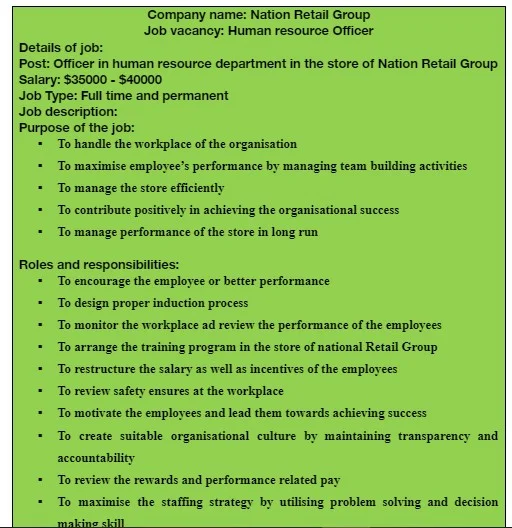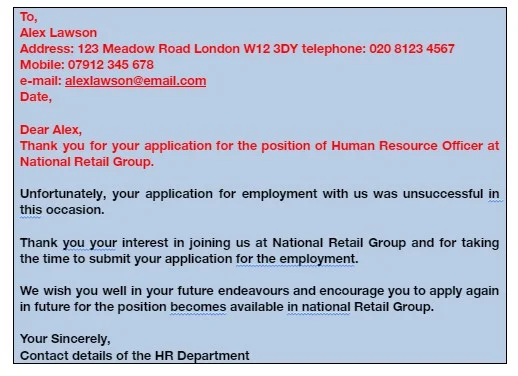Strategic Factors Influencing Talent Attraction
Talent planning
Four factors affecting organisational approach to attract talent
Talent management is necessary for all the organisations to maximise organisational profitability and retain efficient talent pool for achieving future success as the employees are the major stakeholder for enhancing the organisational values sustainably. In this regard, there are different factors which influence the approach to attract talent in the job market which are supply and demand of the workforce in the market, staff turnover, legal compliance and unemployment rate in the market (Noe et al., 2017). For developing effective organisational approach to attract talent, the organisation focuses on demand and supply of the labourers in the market and post proper organisational vacancies through the job portals to retain the employees and apart from those legal policies to recruit and staff turnover are also factors influencing the organisational approach to attract talent. which can be explored further with HRM dissertation help.

Benefits of attracting and retaining a diverse workforce
There are certain benefits of attracting diverse workforce in the organisational workplace where the leader can enhance innovation and creativity by utilising diversified knowledge and skill of the employees. Higher innovation and increasing creativity is hereby the benefits of managing diverse workforce and apart from that, higher employee engagement, variety of different perspectives, increased profitability and sales volume of the companies and improved organisational regulations are there advantages for which the organisational leader encourage to have diversified workforce for the benefits of the organisations (Mondy and Martocchio, 2016). Apart from that, due to diversified workforce in the companies, it is possible for the organisational leader to improve problem solving activities and develop effective decision together by gathering creative ideas and innovative strategic planning to maximise the organisational aims and objectives. Hereby, the multinational corporate firms focus on attracting the diversified workforce for long run to maximise the innovation and creativity and develop effective decision for enhancing the organisational performance in near future (Bratton and Gold, 2017).
Factors affecting an organisation’s approach to recruitment and selection
There are different factors which affect the recruitment and selection process in the organisation (Sarma, 2017). There are external factors such as market competition, information system and employment rate which are effective where the organisations try to analyse the job market and employment rate and recruit the efficient staff members in the organisations. Under the internal factors, the three major factors are such as job type, organisational culture and Company’s growth rate which are crucial to influence the activities of recruitment and selection process of the organisation (Cascio, 2015). In this regard, the organisations try to develop suitable organisational culture as well as convey the actual job type and roles to the employees so that the workforce can apply for the job according to their experience and knowledge efficiency. The company’s growth rate is also major factor affecting the recruitment and selection procedure where the leaders try to recruit more numbers of employees if the company is growing rapidly.
Benefits of recruitment methods
There are different recruitments strategies including job analysis, job advertisement and application method and the major benefits of recruitment methods of the organisations are such as,
The recruitment method is not costly.
The process of recruitment is suitable where the organisation can have larger talent pool in the job market, where new ideas of the employees can be gathered well.
The recruitment strategy of the firm is effective for providing promotion of the business where the organisations can have the opportunity to maximise the organisational values by recruiting the right candidates for the job roles of the companies.
Benefits of selection methods
There are several selection methods such as short listing candidates, interview, personal discussion, personal test and aptitude test which are beneficial for the organisations in log run. The benefits of the selection process of the organisations are such as,
The human resource management team of the organisation can analyse the personal knowledge and capabilities of the employees.
The induction process under the selection category is effective to acknowledge whether the employee is able to perform in the organisational per the job responsibilities or not.
Thorough the selection process, the organisational human resource department can choose the right candidate after proper test and interview that are able to contribute positively in achieving the future sustainable aims of the organisations (Stoilkovska, Ilieva and Gjakovski, 2015).
Purpose of induction
There is several purpose of the induction training in the organisations which in turn provides a scope to retain the efficient and suitable employees in the organisation. The purposes of designing induction process in the organisation are,
To reduce the cost of recruitment and selection
To save time for co-worker and supervisors
To reduce employee turnover in the organisation
To develop realistic job expectations
To enhance job satisfaction and positive attitude

The above mentioned purposes are realistic for the organisations, for which the companies try to develop appropriate induction process in the organisation so that it can share the organisational practice and culture with the employees and lead the staff members towards achieving the future organisational success.
Benefits of induction for the individuals and the organisations
There are certain benefits of developing induction process in the organisations which are advantages for both the employees and the organisations as well.
The benefits of induction for the individuals are such as,
The employees can gather in depth knowledge and improve their skill in the organisation by gaining more understanding about the organisational working practice.
The induction process is advantageous for the employees for ensuring personal and professional’s development in near future.
The employees can feel comfortable in the organisation to performance and can understand the organisational practice and culture to perform better in future.
The employees have the opportunity to develop partnership working and integrated workplace in the organisation to perform better with cooperation and communication (Sparrow, Brewster and Chung, 2016).
The organisations are also advantageous by developing suitable induction planning which are,
The leader can create engagement among the employees.
Increasing employee retention and developing positive organisational culture with good brand image among the employees can be developed well through the induction planning (Goldstein et al., 2017).
The leader can motivate the employees and encourage their creativity and innovation.
The organisations also can maximise employee productivity in shorter time period through providing effective induction process which in turn helps the firms to achieve future success by maximising brand values and employee performance.
Induction plan


The above mentioned planning is related to the activities an proper time line on the basis of which the induction planning can be developed in the organisation to provide proper overview about organisational activities to the selected employees in the companies. In this process of induction training in the organisation, there are line managers, human resource management team and leader of the organisation as well as the health and safety officers who are engaged with the planning of induction program, so that they can develop effective program to share appropriate information about the workplace rules and working practice in the organisation.
Recruitment and selection activity
Job description

Personal specification


Job advertisement

Selection Criteria

Short listing criteria

Scoring System
0 = no evidence
1 = some evidence
2 = evidence of criteria
3 = exceeds required criteria
List of questions for personal interview

Interview assessment record

James Jackson is selected for the company, where he has completed the Business Studies degree, and also has knowledge regarding Microsoft Word, Excel, PowerPoint, and Project. He has worked as HR & Recruitment Coordinator and Recruitment Consultant and thus it would be beneficial for his to handle the organisational operational activities as a HR officer.
Letter for successful applicant

Letter for unsuccessful applicant

Continue your journey with our comprehensive guide to Responsibilities of Hr Managers in Talent Management.
Reference list
Bratton, J. and Gold, J., 2017. Human resource management: theory and practice. London: Palgrave.
Cascio, W.F., 2015. Managing human resources. London: McGraw-Hill.
Goldstein, H.W., Goldstein, H., Pulakos, E.D., Passmore, J. and Semedo, C. eds., 2017. The Wiley Blackwell handbook of the psychology of recruitment, selection and employee retention. New York: John Wiley & Sons.
Mondy, R. and Martocchio, J.J., 2016. Human resource management. London: Pearson.
Noe, R.A., Hollenbeck, J.R., Gerhart, B. and Wright, P.M., 2017. Human resource management: Gaining a competitive advantage. New York, NY: McGraw-Hill Education.
Sarma, J., 2017. Recruitment And Selection In Assam Carbon Products Limited. Deliberative Research, 35(1), pp.27-32.
Sparrow, P., Brewster, C. and Chung, C., 2016. Globalizing human resource management. London: Routledge.
Stoilkovska, A., Ilieva, J. and Gjakovski, S., 2015. Equal employment opportunities in the recruitment and selection process of human resources. UTMS Journal of Economics, 6(2), pp.281-292.
- 24/7 Customer Support
- 100% Customer Satisfaction
- No Privacy Violation
- Quick Services
- Subject Experts



